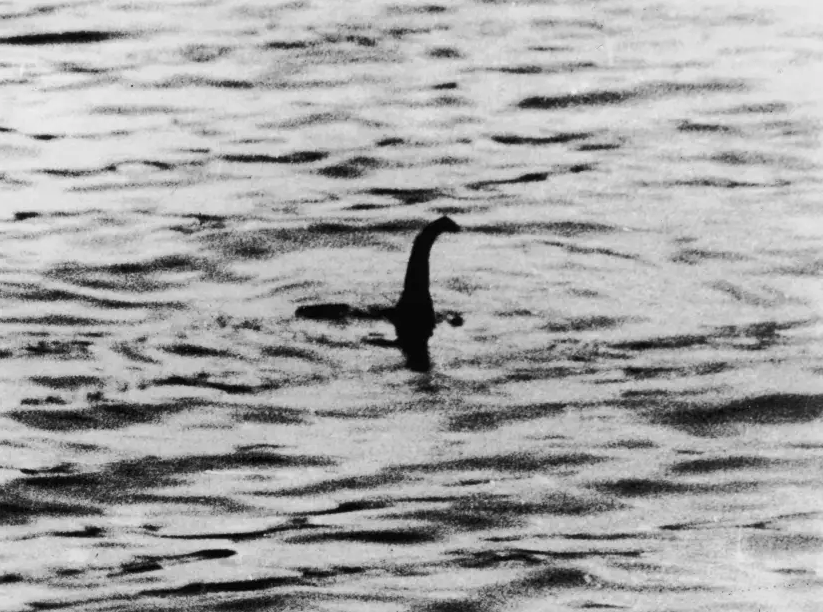Filled with rich history and culture, Scotland has been a popular tourist destination for decades. Edinburgh Castle, Loch Lomond, Stirling Castle and the Northern Highlands have long been on visitors’ “must see” lists. The Outlander series of books, along with the Starz TV series, have renewed interested in the country, with visitors to the places that represent Lallybroch (Midhope Castle), Inverness (Falkland), Castle Leoch (Doune Castle) and Fraser’s Ridge (the town of Crieff stood in for North Carolina). It’s no wonder why the country had over 150 million visitors in 2019 alone.
Perhaps one of the longest lasting tourist attractions in Scotland is Loch Ness, the large freshwater loch (lake) in the Scottish Highlands. It takes its name from the River Ness, which flows from the northern end. Loch Ness’s main popularity came from a creature of Scottish Folklore, the Loch Ness Monster.
The Loch Ness Monster, affectionately known as “Nessie,” has been reported since ancient times, going as far back as 565 A.D.. (S)he’s had a following, on and off, since the mid-late 1800s. For example, here’s a description of a sighting, as published in The Inverness Courier in May, 1933:
The creature disported itself, rolling and plunging for fully a minute, its body resembling that of a whale, and the water cascading and churning like a simmering cauldron. Soon, however, it disappeared in a boiling mass of foam. Both onlookers confessed that there was something uncanny about the whole thing, for they realised that here was no ordinary denizen of the depths, because, apart from its enormous size, the beast, in taking the final plunge, sent out waves that were big enough to have been caused by a passing steamer.
But a photograph taken by an English physician named Robert Kennedy Wilson, that was said to be Nessie, published in November 1933, is what caused the most frenzy about the “beast”:

The photo, commonly known as as the “surgeon’s photograph,” was eventually determined to be a hoax, but that didn’t stop everyone from trying to figure out what Nessie actually was – an otter? An eel? Driftwood? A dinosaur? Or truly a creature unknown to man?
Michael Sweet is a Professor in Molecular Ecology at University of Derby. According to his biography, Dr. Sweet has published over 100 research articles in peer-reviewed journals in the past 10 years. He’s also won numerous awards including the Charles Darwin Award lecture from the British Science Association and staff excellence awards at the University of Derby. So I guess you could say he knows his stuff when it comes to things that live in water.
And what does Dr. Derby thing Nessie is? A whale penis. (Note: NSFW warning on the tweet below – adult language)
Back in day, travellers/explorers would draw what they saw. This is where many sea monster stories come from ie. tentacled and alienesque appendages emerging from the water – giving belief to something more sinister lurking beneath….however, many cases it was just whale dicks. pic.twitter.com/6ZH1nJZvB1
— Prof. Michael Sweet (@DiseaseMatters) April 8, 2022
He continued…
One female whale is typically paired with a primary escort (male) and a group of males will try to fight for their right to overthrow the escort and earn mating rights. A competition pod can have just a handful of whales or a larger group of 12-15.
— Prof. Michael Sweet (@DiseaseMatters) April 8, 2022
I strongly suspect Dr. Sweet was just saying this tongue in cheek. However if you’ve got some time, go to the original post and read the thread. It’s amusing 😉
Oh, and if you want to see for yourself if maybe “Nessie” could even possibly really be whale penis, go to the Icelandic Phallological Museum (a.k.a. “The Penis Museum”) in Reykjavík – they have fifty six specimens belonging to seventeen different kinds of whale. We went last summer – it was an interesting way to kill an hour or two.
Will this affect how many people visit Lock Ness? Nah, I doubt it.
Meanwhile, Nessie has been very good to the economy of Scotland, with approximately $80 million per year added to the nation’s economy.
Want to comment on this post? Great! Read this first to help ensure it gets approved.
Want to sponsor a post, write something for Your Mileage May Vary or put ads on our site? Click here for more info.
Like this post? Please share it! We have plenty more just like it and would love it if you decided to hang around and sign up to get emailed notifications of when we post.
Whether you’ve read our articles before or this is the first time you’re stopping by, we’re really glad you’re here and hope you come back to visit again!
This post first appeared on Your Mileage May Vary

1 comment
Nessie or no, the Loch is gorgeous.